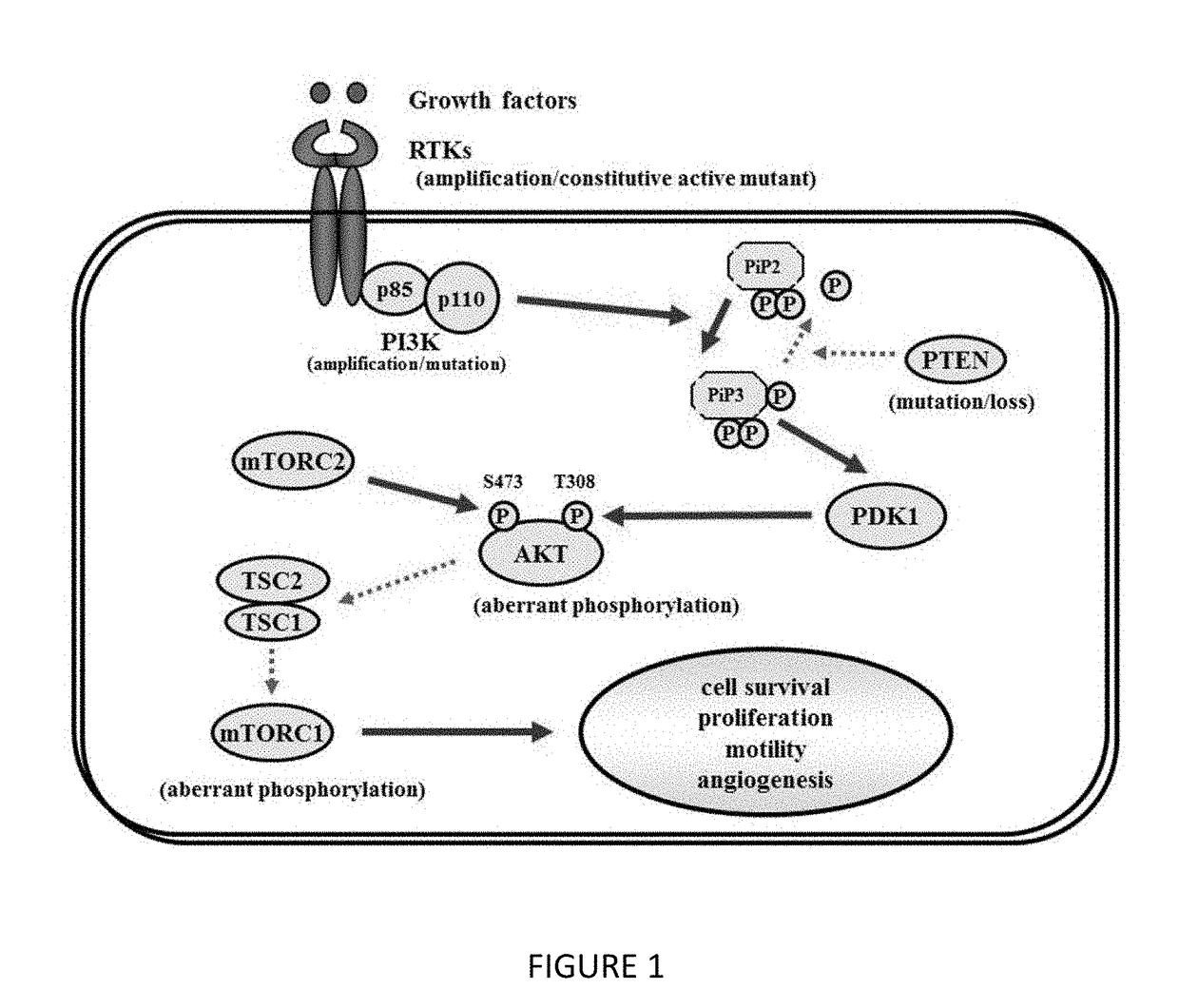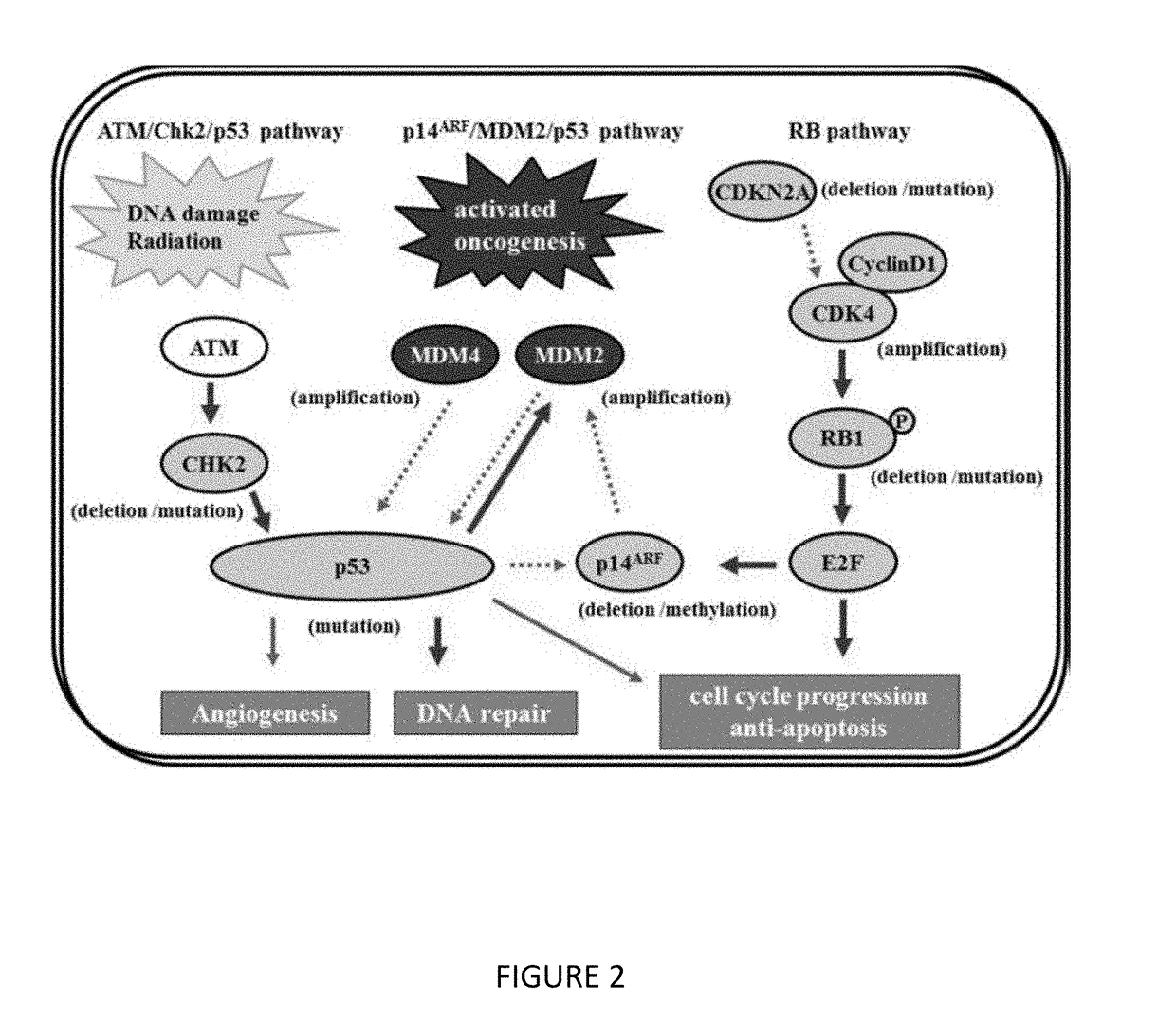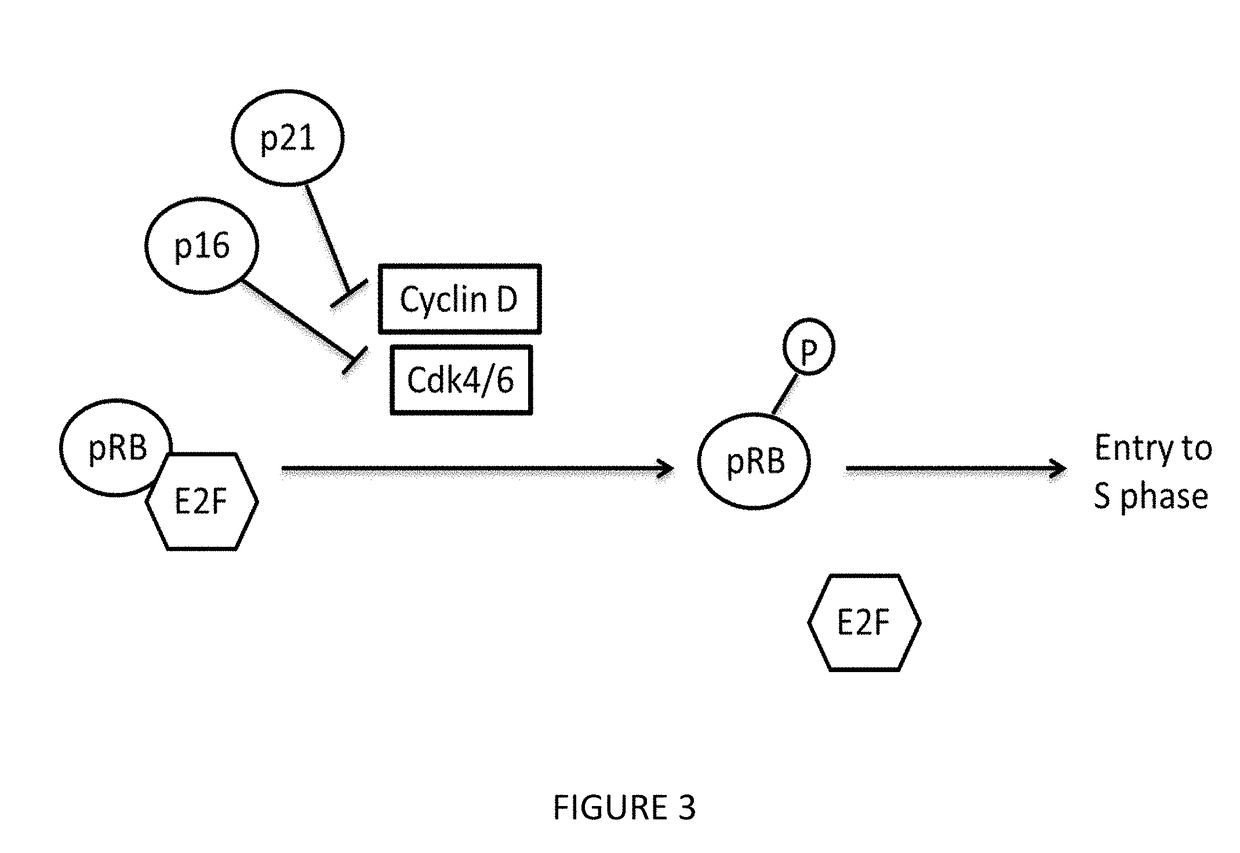Benzamide or benzamine compounds useful as anticancer agents for the treatment of human cancers
a technology of benzamide or benzamine, which is applied in the field of small molecule anticancer therapy, can solve the problems of aggressive human cancer, difficult treatment, uncontrollable tumor growth, etc., and achieve the effect of inhibiting the cholesterol biosynthesis pathway
- Summary
- Abstract
- Description
- Claims
- Application Information
AI Technical Summary
Benefits of technology
Problems solved by technology
Method used
Image
Examples
example 1
[0740]A mouse colony with 100% incidence of GBM and with conditional knockout of p53, pTEN and NF1 genes (Mut6; glioblastoma) was used to isolate primary neuronal stem cells from GBM tumors cultured in 5% Oxygen and in serum free media with defined growth factors. Primary cells from multiple tumors were pooled for high throughput screening with controls against the University of Texas Southwestern (UTSW) compound file, which encompasses ˜200,000 synthetic compounds that represent a large chemical space from several commercial vendors, including 1200 marketed drugs from the Prestwick Chemical Library®, and 600 compounds that went to pre-clinical tests from the NIH library.
[0741]A luminescence-based Celltiter-Glo® assay was performed to measure cell viability, using ATP levels as the readout. In brief, opaque-walled multiwell plates with Mut6 cells in culture medium (250 per well, 384-well plates) were prepared. Control wells containing medium without cells were prepared to obtain a v...
example 2
ors of Cholesterol Biosynthesis Pathways
[1032]Microarray analysis was conducted to identify overrepresented pathways associated with treatment with compound 4C12 for 48 hr. The results, which are shown in FIG. 9, suggest that compound 4C12 deregulates the cholesterol biosynthesis pathway.
[1033]Cholesterol Pathways
[1034]The major types of lipids that circulate in plasma include cholesterol and cholesteryl esters, phospholipids and triglycerides. Braunwald's Heart Disease, P. Libby, R. Bonow, D. Mann and D. Zipes, Eds., 8th Edition, Saunders Elsevier, Philadelphia, Pa. (2008) at 1071. Cholesterol contributes an essential component of mammalian cell membranes and furnishes substrate for steroid hormones and bile acids. Many cell functions depend critically on membrane cholesterol, and cells tightly regulate cholesterol content. Most of the cholesterol in plasma circulates in the form of cholesteryl esters in the core of lipoprotein particles. The enzyme lecithin cholesterol acyl transf...
example 3
ts Showing that Cholesterol Synthesis Enzymes are Downregulated by 4C12
[1163]FIG. 12A is a bar graph showing cholesterol (pg / cell), and triglyceride (pg / cell) levels in Mut6 cells treated with compound 4C12 for 24 hours and 48 hours, versus a negative control (vehicle only). The figures show that in the presence of compound 4C12, cholesterol level decreases, and triglyceride level increases. FIG. 12B is a bar graph of relative mRNA vs. enzymes of cholesterol synthesis showing that genes for cholesterol synthesis enzymes are down-regulated by 4C12. Mut6 cells were treated with compound 4C12 for 24 hours and then mRNA levels for Hydroxymethylglutaryl-CoA synthase(Hmgcs); 3-hydroxy-3-methylglutaryl-coenzyme A reductase (Hmgcr); acetoacetyl-CoA synthetase (AACS); Delta(24)-sterol reductase (Dhcr24); 7-dehydrocholesterol reductase (Dhcr7), Sterol C5-desaturase (Sc5d); Squalene synthase (SS); and farnesyl pyrophosphate (FPP) synthase (FPPS) were determined.
[1164]In FIG. 13(a)-(e) Mut6 cel...
PUM
| Property | Measurement | Unit |
|---|---|---|
| time | aaaaa | aaaaa |
| time | aaaaa | aaaaa |
| particle size | aaaaa | aaaaa |
Abstract
Description
Claims
Application Information
 Login to View More
Login to View More - R&D
- Intellectual Property
- Life Sciences
- Materials
- Tech Scout
- Unparalleled Data Quality
- Higher Quality Content
- 60% Fewer Hallucinations
Browse by: Latest US Patents, China's latest patents, Technical Efficacy Thesaurus, Application Domain, Technology Topic, Popular Technical Reports.
© 2025 PatSnap. All rights reserved.Legal|Privacy policy|Modern Slavery Act Transparency Statement|Sitemap|About US| Contact US: help@patsnap.com



